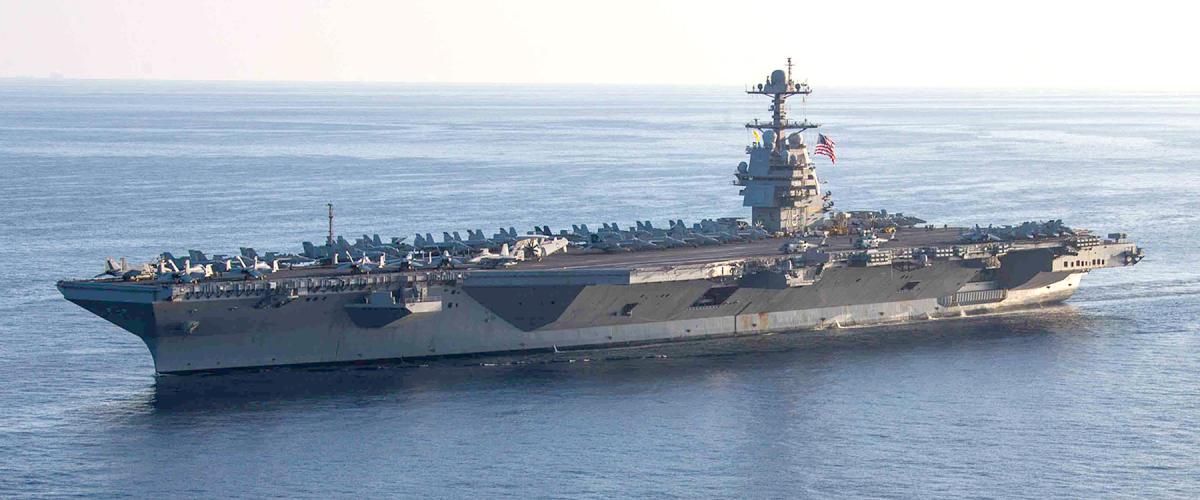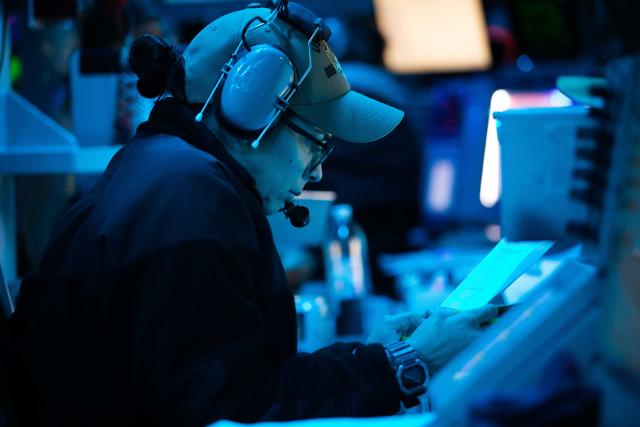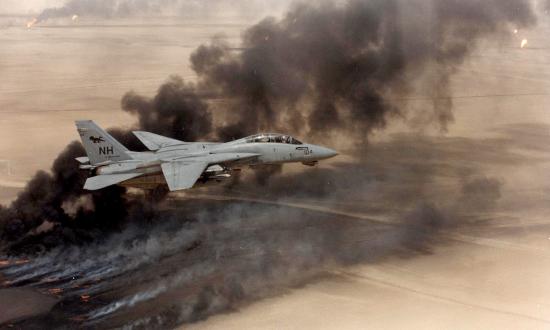To paraphrase Leon Trotsky, “You may not be interested in the Middle East, but the Middle East is interested in you.” Just as the Biden administration, following on the heels of its predecessor, was trying to extract the United States from the near-constant drama of the Middle East to focus on peer competitors, serious conflict has re-emerged to draw it back in.
On 7 October—the 50th anniversary of the Yom Kippur War—Hamas conducted a large-scale attack on Israel from Gaza via land, sea, and air, killing more than a thousand military personnel and civilians and taking more than 150 hostages. This surprise, multi-dimensional, and brutal attack—conducted at least with Iran’s blessing, if not its urging and tangible support—has widely been tagged as Israel’s 9/11.
Undoubtedly, the familiar question “Where are the carriers?” was one of the first asked in the White House Situation Room on Saturday morning. The USS Gerald R. Ford (CVN-78)—the U.S. Navy’s newest and most capable aircraft carrier, on its first extended overseas deployment—was quickly ordered to the eastern Mediterranean along with five surface combatants as part of the U.S. response.
The twin missions of the U.S. government will be to support Israel in its struggle against Hamas and prevent this conflict from spreading into a regional conflagration. While the former principally will involve the resupply of weapons to Israel, it could quickly evolve into direct support. The latter will require deterring Iran and its other surrogate, Hezbollah in southern Lebanon, from taking advantage of Israel’s preoccupation with Hamas to attack it from the north.
The Gerald R. Ford carrier strike group (CSG) brings impressive power to bear on these missions, unencumbered by any diplomatic concerns or constraints U.S. land-based forces might experience operating in the region. The CSG’s contribution to those missions will fall into several categories.
ship’s combat direction center on 9 October. (U.S. Navy/Mackenzie Culver)
Strike Warfare
Initially, in the unlikely event that Hamas can continue—or that Hezbollah commences—ground attacks into Israel, the carrier’s air wing could conduct precision strikes against those forces if Israeli capacity comes up short. This would require quickly establishing a command-and-control mechanism to deconflict U.S. strikes from those conducted by Israeli forces. It is difficult, however, to imagine U.S. forces attacking Hamas in Gaza or Hezbollah in Lebanon, principally because of collateral damage concerns.
Special Operations Support
Gaza is one of the most densely populated areas in the world—more than two million people live within its 140.9 square miles. This makes it an extremely difficult urban operating environment, but it is possible the Gerald R. Ford could be used as a base for U.S. special operations forces should they be required to attempt to rescue hostages or help Israel with such missions.
Missile Defense
One of the most important deterrent missions for the strike group will be augmenting Israel’s Arrow and David’s Sling ballistic missile defenses should Iran choose to attack Israel directly. Indeed, there is a long history of surface combatants assigned to the U.S. Sixth Fleet being prepared to assist in the ballistic missile defense of Israel, and the rules of engagement are in place. The five guided-missile ships accompanying the Gerald R. Ford include the USS Normandy (CG-60), Thomas Hudner (DDG-116), Ramage (DDG-61), Carney (DDG-64), and Roosevelt (DDG-80). These ships have varying radar and antimissile capability, as well as missile loadout, but they will all play a role in this important mission.
Other Missions
The carrier and air wing combination has other capabilities it can bring to bear, including electronic warfare (conducted by its EA-18G Growlers) and command and control, early warning, and surface surveillance (performed by its E-2D Hawkeye aircraft). A host of missions could be performed by the helicopters organic to the carrier and its escorts, including search and rescue, surface surveillance, and interdiction of Hamas fighters operating out of, or weapons flowing into, Gaza by sea.
There are challenges that must be resolved regarding the survivability of carrier strike groups operating inside adversary weapons engagement zones. This latest Middle East crisis, however, underscores the continuing utility of U.S. aircraft carriers and their supporting forces as potent, highly mobile, sustainable, and diplomatically unencumbered sources of U.S. military power in other vitally important operational settings. And another carrier could soon be on the way.







